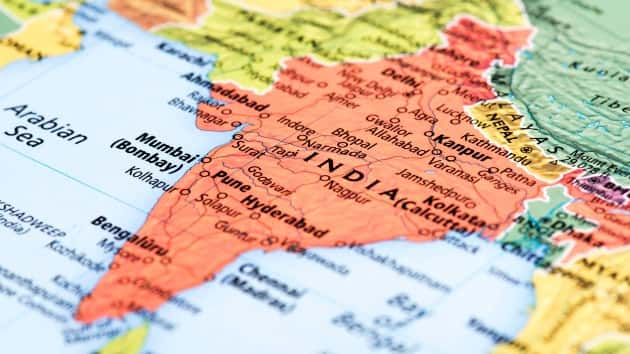
omersukrugoksu/iStock
omersukrugoksu/iStock(NEW YORK) — India’s first week of a nationwide 21-day lockdown in response to the coronavirus has shined a brutal spotlight on the plight of the country’s most vulnerable citizens.
Mirai Chatterjee, who is based in densely populated Ahmedabad, a northern city of more than five million, knows this better than anyone.
“The poorest and weakest in our society are the women,” said Chatterjee, who directs the social security team for the Self-Employed Women’s Association (SEWA), a trade union that supports 1.7 million low-income women who are self-employed.
Under normal circumstances, her members’ lives are punctuated by food and income insecurity, as well as difficulty accessing health care and childcare.
Under the nation’s new 21-day lockdown, female workers without salaries are struggling to survive.
Indian Prime Minister Narendra Modi announced the 21-day lockdown with no warning last week, effectively halting the movement of an estimated 1.3 billion people just four hours before the decree went into effect at midnight March 25.
“There will be a total ban on venturing out of your homes,” Modi said. “Stay wherever you are in the country.”
The new orders, which affected non-essential workers, took a toll on Chatterjee’s members, including construction workers, small farmers, vendors, garment and domestic workers, and rickshaw drivers, who aren’t salaried.
“Today you work, today you earn, today you eat,” Chatterjee said.
Without daily wages, they don’t have money to buy food or medicine. Few have savings to fall back on.
“That is one huge humanitarian crisis, which we’re still going through,” Chatterjee said. “There were no systems put in place at the time of this announcement. Nobody told them, stay where you are, you’ll get food, we’ll take care of you.”
Prerna Singh, an associate professor at Brown University, who is working on a book about infectious disease control in India and China, said the lockdown ignored the reality of life for those who survive on daily wages.
The government’s response, showed “complete callousness and indifference to plight of India’s most marginalized,” she said.
“They put in place this authoritarian order, without thinking of the hundreds of thousands of people who are so far from home, who don’t have homes,” Singh added.
The lockdown, which shut down transportation options almost immediately, came so quickly that when migrant workers found themselves with no way to make money, they set off on foot for their home villages, sometimes hundreds of miles away.
“People are desperately trying to go back to their home villages,” Chatterjee said.
In addition to risking exposure to the elements by walking four or five days on the road, “the other worry is that when people flee cities, they are carrying the virus to areas that did not have it,” she said, noting that rural areas in India have especially weak public health systems.
“By not planning for this mass exodus, we have actually endangered more people,” Chatterjee said.
On March 26, the government announced a $2 billion stimulus package. Local governments have also begun to step in and provide aid, like shelter and food.
While Chatterjee and her colleagues at SEWA normally do in-person outreach, since their office closed they’ve been working the phones and contacting members using Zoom and WhatsApp.
“We have a cadre of grassroots women leaders, who are embedded in the communities they live in,” Chatterjee said.
Those grassroots leaders are distributing food, information and health kits, including masks and soap, to members who need it.
Even with those stopgap measures, the situation is grim, Chatterjee said.
Public health recommendations, such as constant hand washing, aren’t possible to implement effectively in households where there’s only enough water to bath once or twice a week.
“Where is the water for that?” Chatterjee asked.
Similarly, going grocery shopping once a week isn’t practical for low-income people, and even less so for those who have lost their income entirely.
“They don’t have that financial backing where they can stock up,” Chatterjee said.
And unlike middle- and upper-class households, where residents with outside space say that the sky is pollution-free and bluer than ever because of the lockdown, a different remark is reverberating in poor, densely populated areas, Chatterjee said.
“Many women have asked, ‘How can we do social distancing? It’s virtually impossible,'” she said.
Copyright © 2020, ABC Audio. All rights reserved.